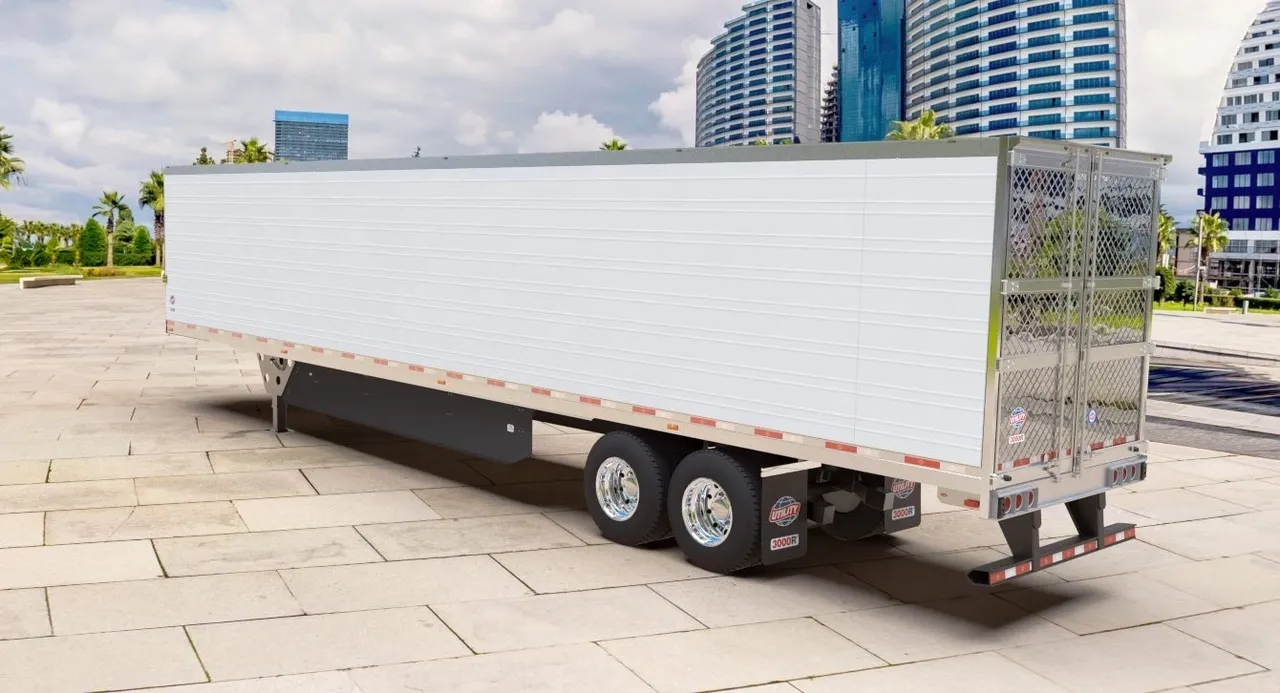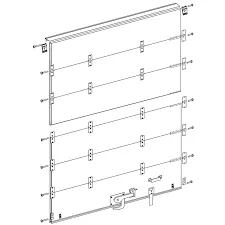Are you looking to measure your garage door but feel a bit lost? Don’t worry! Measuring your garage door doesn’t have to be hard. This guide will take you through every step in a super easy way. You’ll learn how to get the right measurements so you can buy the perfect garage door that fits just right. Ready? Let’s go!
Why Measuring Your Garage Door is Important ?
First things first, why do we need to measure a garage door? Well, if your measurements are wrong, your new door might not fit, which can cause a lot of problems. The door might not close properly, it could get stuck, or you could have gaps that let in cold air, bugs, or even rain. Plus, it could cost more money to fix later. That’s why getting the measurements right the first time is super important.
Tools You’ll Need
Don’t worry; you don’t need any fancy tools to measure your garage door. Here’s what you need:
Tape Measure:
A basic one will do. You’ll use this for all the measurements.
Step Ladder:
To reach the higher parts of the door opening safely.
Paper & Pen:
You’ll be writing down a lot of numbers, so have these ready.
Level (Optional):
This helps you make sure your measurements are straight.
Pro Tip:
Use a Helper
It’s a good idea to have someone help you hold the tape measure, especially for wider or taller doors. It makes things easier and more accurate!
How to Measure Your Garage Door Step-by-Step
Okay, now let’s get into the details. We’ll break down each part of the measurement process, so you know exactly what to do.
Step 1: Measure the Width of the Garage Door
The width is the first measurement you’ll need. This is the distance from one side of the door opening to the other side.
Start at One Side:
Hold the tape measure at the inside edge of one side of the garage door opening. Make sure it’s lined up straight.
Stretch to the Other Side:
Pull the tape measure straight across to the opposite side of the opening.
Check Your Line:
Make sure the tape measure isn’t drooping or angled. It needs to be straight.
Write It Down:
This is the width of your garage door. Make sure to write it down exactly as you measured it.
Step 2: Measure the Height of the Garage Door
Next, you’ll measure the height, which is the distance from the floor to the top of the garage door opening.
Place the Tape Measure on the Floor:
Put the end of the tape measure on the ground, right at the bottom of the garage door opening.
Extend Upwards:
Pull the tape measure straight up to the top of the garage door opening.
Keep it Straight:
Make sure the tape measure is straight and not leaning or bent.
Note the Height:
Write down this measurement as well. This is how tall your garage door needs to be.
Step 3: Measure the Side-room
The side-room is the space on either side of the garage door opening. You need this space for the tracks, springs, and other hardware to fit.
Left Side:
Measure from the edge of the garage door opening to the nearest wall on the left side.
Right Side:
Do the same on the right side of the door.
Check for Obstacles:
Look for anything that might get in the way, like pipes, electrical outlets, or beams. You need clear space for the hardware.
Write It Down:
You need about 3.75 inches on each side for most garage doors, but it’s always good to double-check your measurements.
Step 4: Measure the Headroom
Headroom is the space from the top of the garage door opening to the ceiling. You need this space for things like the torsion spring and garage door opener. If you don’t have enough headroom, the door might not open all the way.
Start at the Top of the Opening:
Place the tape measure at the very top of the garage door opening.
Measure Up to the Ceiling:
Pull the tape measure straight up to the ceiling. This is your headroom.
Note Any Obstructions:
Look for things like beams, pipes, or lights that might get in the way of the door’s operation.
Write It Down:
Most garage doors need at least 10 inches of headroom, but some might need more. Write down what you measure.
Step 5: Measure the Backroom
The backroom is the space from the garage door opening to the back wall of the garage. This is super important because you need enough space for the garage door to fully open.
Measure from the Opening to the Back Wall:
Start at the top of the garage door opening and pull the tape measure all the way to the back wall of the garage.
Make Sure the Path is Clear:
Check if there are any shelves, beams, or other things that might block the garage door when it’s open.
Write Down the Measurement:
The backroom should be at least the height of the door plus 18 inches. This gives you enough room for the garage door to open fully.
Extra Step: Check the Floor Level
Not all garages have perfectly level floors. An uneven floor can cause the door to not seal properly when closed.
- Use a Level: Place a level on the floor along the bottom of the garage door opening.
- Check for Gaps: If the floor is sloped or uneven, note how much it’s off. This can help when installing the new door.
- Write Down Any Differences: Record any uneven spots so you can adjust for them when choosing or installing your new door.
Tips for Different Types of Garage Doors
For Sectional Garage Doors
If you have a sectional garage door, you’ll need a little more space. These doors have several panels that fold as they open. Make sure you have enough headroom and sideroom for the panels to move freely.
For Roll-Up Garage Doors
Roll-up garage doors coil up into a roll above the opening. You need extra headroom for this type of door. Make sure to measure from the top of the door opening to the ceiling to see if you have enough space.
For Custom or Oversized Garage Doors
If you’re getting a custom or oversized door, make sure you have enough backroom and sideroom. These doors need more space to operate smoothly.
Common Mistakes to Avoid
Measuring Only One Side:
Always measure both sides of the garage door opening. Sometimes, one side can be a little different than the other.
Not Accounting for Obstructions:
Pipes, beams, and other obstacles can get in the way. Make sure you measure around them or note them down.
Ignoring the Floor:
A slanted or uneven floor can make your door look crooked or not close properly. Check the floor level and note any differences.
Choosing the Right Garage Door
Now that you’ve got all your measurements, it’s time to choose the right garage door. Here are a few things to think about:
Material:
Steel is durable and low-maintenance. Wood looks great but needs more care. Aluminum is lightweight and good for larger doors.
Insulation:
If your garage is attached to your house, consider an insulated door. It can help keep your garage warm in winter and cool in summer.
Style:
Garage doors come in many styles, like traditional, carriage house, or modern. Pick one that matches your home’s look.
Don’t Forget the Hardware!
Hey, don’t forget to think about the hardware, too! You need tracks, rollers, and springs that match your door. If your hardware isn’t right, the door might not work well or could even break. For example, you gotta make room for the torsion spring—it’s the thing that helps lift the door! And the rollers? They need space to move along the tracks. Make sure everything fits together.
Still Feeling Stuck? Ask a Pro!
If you’re still unsure about measuring your garage door, it’s okay to ask for help. A professional can come to your home and measure everything for you. It’s better to get it right the first time than to deal with a door that doesn’t fit later on.
Final Thoughts
Measuring a garage door might seem tough, but it’s really just a few simple steps. Take your time, measure carefully, and write down everything. With the right measurements, you’ll find a door that fits perfectly and works smoothly. And if you need help, don’t hesitate to call in a pro. Now go out there and get the perfect garage door!
778-873-7282 or email us at [email protected]


